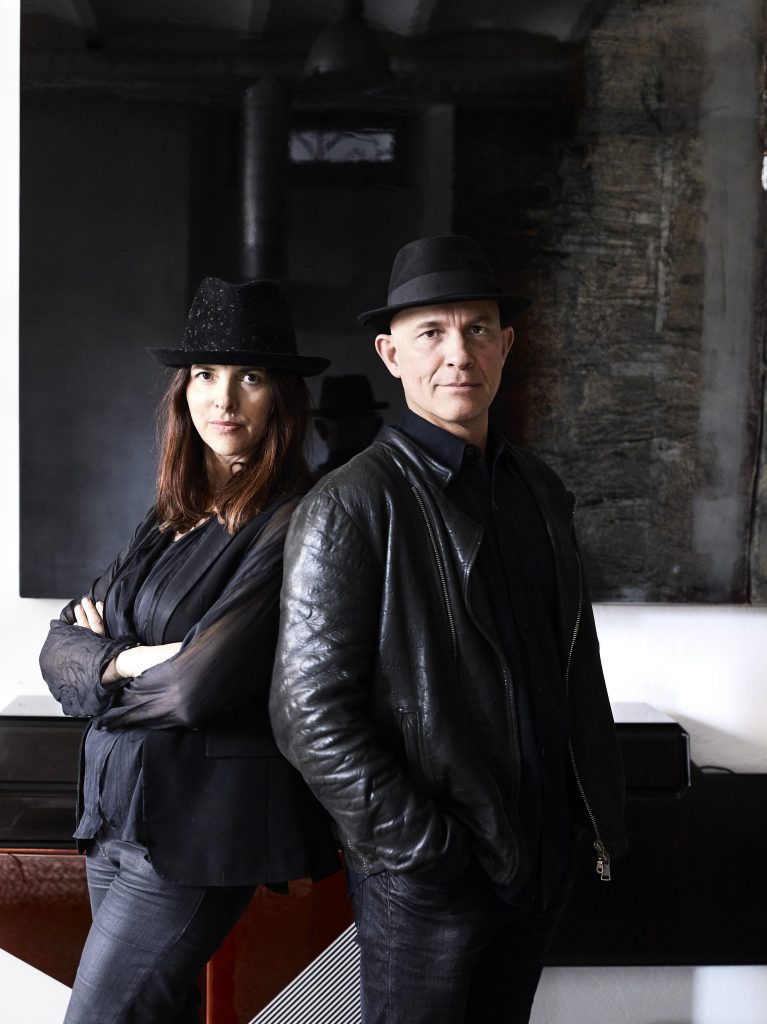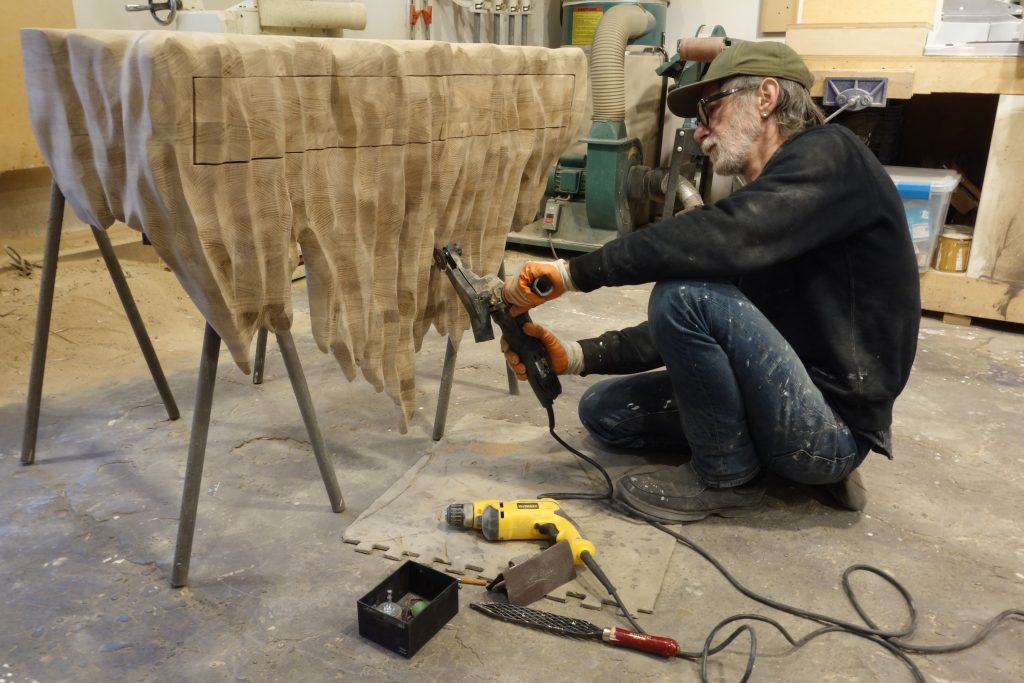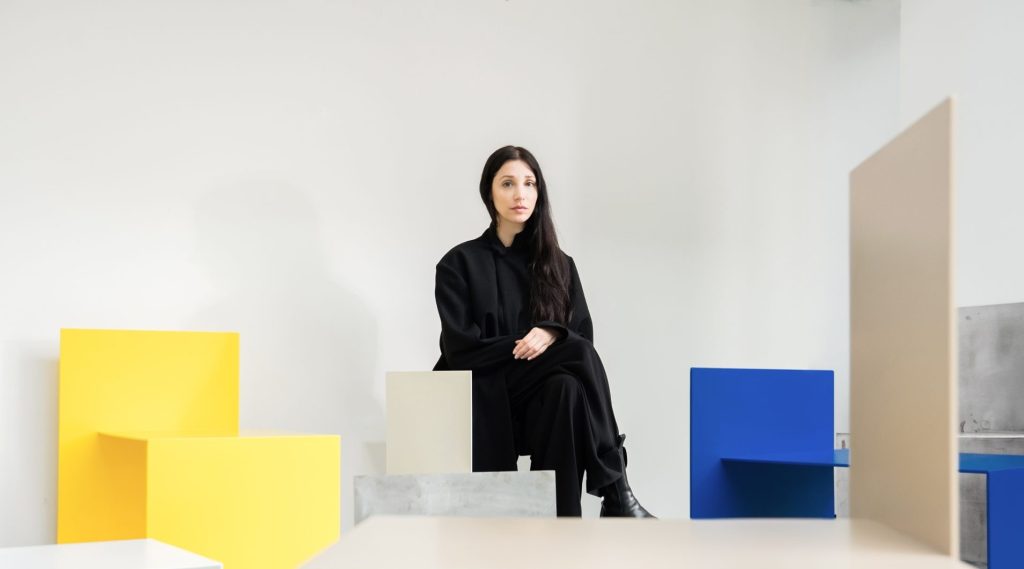Draga & Aurel: Cultural Crossovers
“our partnership expresses our creativity through a perfect combination of art and design”
– Draga Obradovic & Aurel K. Basedow


View Draga & Aurel’s work in the Italian collection for Crossovers.
This year during London Design Fair Adorno presented the first installment of Crossovers: a celebration of a new generation of makers working in the intersection between art, design, and craft playing a central role in maintaining and renewing today’s local design and crafts culture. Crossovers exhibited works from 11 distinct cultural scenes together in one exhibition space, allowing visitors were able to compare and contrast similarities and differences amongst the geographically distant areas. But physical distance is not the only barrier that these designers have crossed, from the worlds of architecture, fashion, fine arts and industrial design today’s creative makers work from a multitude of influences where the objects they create exist in a world all their own. Exemplifying this term of “Crossovers” is design duo Draga & Aurel.
Presented in the Italian collection, Interni Milanese, Draga & Aurel is comprised of German-born Aurel K. Basedow and Serbian born Draga Obradovic and operate from their studio based in Como. The duo combines their expertise from across the cultural world, with Obradovic’s years of experience in the fashion industry as a textile designer in London and Milan, and Basedow’s experience in fine arts from Florence’s Accademia di Belle Arti as well craft knowledge in wood-working. Such a diverse cultural background and influences allow the duo to develop an approach to material, surface, color, light, and form in captivating and unexpected ways. The resulting creations have a clear functional role, but their form could just well be appreciated in a fine arts setting for sculptural beauty, or seen reinterpreted down any haute couture runway.
For their collection, Transparency Matters, Draga & Aurel pushed the boundaries of material to manipulate light and color in such a sensual way that it makes solid forms appear to drip melt or float in liquid-like states. Through the use of transparent materials like resin and glass combined with dense, deep and emotionally charged colors, a series of functional tables, stools, and lights exist in-between states of physical matter. Agatha tables are created using a special technique for casting resign wich resemble droplets of water-color on a painter’s pallet, connected with the bold elegance of brass. In Joy lamps, the same surface and treatment of color are reflected in glass and neon melts and drips down walls while it fills spaces with intoxicating shades of reds, blues, and greens. Drag & Aurel’s creations convey a deeply personal and emotional journey they have undergone to become the masters of crossovers that they are today.


You both come from separate and distinct creative backgrounds, was it difficult at first to collaborate and were there any obstacles at the beginning?
In part different, in part similar, our backgrounds have always worked well since 2007. We both attended the degree in “Fine Arts” in Florence and then Aurel started teaching art and African music, while I continued to dream up fabric patterns for Milan’s catwalks. Thanks to these diverse backgrounds spanning fashion design, textiles, woodwork, and contemporary graphic arts, our partnership expresses our creativity through a perfect combination of art and design.
Apart from your interdisciplinary skills, your practice also combines both of your unique cultural backgrounds (Germany and Serbia), how do you navigate these influences in a third cultural space, Italy, and how has this affected your work?
Our approach to design reflects our diverse culture heritage. There are events and people which have influenced and others which inspired us. There is a thin red line that separates the two. Talking about me, the socialist culture – Tito, Marx, Lenin, Pushkin – and the brutalist architectures had a great impact on me. On the other hand, Aurel was influenced by the New Age movement. But we were both inspired by Dada movement, abstract American expressionism, cinema, design from the thirties to the sixties, Mark Rothko for his colours, Alighiero Boetti for his playing with coincidences, rock from ’70s for the mix of music and contents, Oscar Wilde for his irony. Italy is the country that we have chosen for “La grande bellezza” (film by Paolo Sorrentino) and the Como Lake is the heart place we live in and create for the last 30 years.
“Crossovers” is about highlighting individuality while showcasing cross pollination of cultural influences in geographically distant communities, your work contains a multitude of “Crossovers” why is this important in design today, and how does this add value to your works?
“Crossovers” expresses our state-of-mind and this is the reason, so we are so glad to be part of this event. We trust and believe this is the trend of the future.


Can you describe your process in creating the works you are showcasing at “Crossovers”, and what story did you want these works to tell?
For the collection, we took inspiration from Minimalism’s simplified volumes, the retro-futuristic experimentation of Space Age design and the eye-bending patterns of Optical Art. Together, they have brilliantly synthesized these varied influences to build an all-new collection, entirely fabricated by hand in our Como atelier. “Transparency matters” is the title and, for us, it is the most important attitude. It refers to the transparent materials used in the collection – cast resin, glass and plexy – as well as our evolutions as designers. From Transparency, we think of transformation, transition, transgression, transnational: all words that describe us and our more than ten years of working together.


How do you see designers and the design world evolving with regards to this kind of cross-disciplinary collaboration, are we becoming more open to influences?
For us being designers means creating context and connections between art, style, architecture, historical design, and other references. During the research process it’s important to discover things about people, stories, cultures, from eras we are particularly interested in. We may learn from them and expand our vision. Design plays an important function, not only by creating beauty but also contributing to sharing culture.


Bio


Draga & Aurel
Founded in 2007 in the town of Como, Italy, Draga & Aurel is a multi-disciplinary design studio that works along the spectrum of furniture, textile and interior design. Draga Obradovic began her career in the fashion industry, first working in London and Milan as a textile designer before eventually settling in Como. Aurel K. Basedow graduated from Florence’s Accademia di Belle Arti with a degree in Fine Arts, having previously trained as a carpenter and woodworker. Thanks to their sympathetic methods, combined with an artist’s approach to material and composition Draga & Aurel are widely recognized for their clever reinvention of bespoke vintage design pieces. Their showing at 2009’s Salone del Mobile introduced the duo to the world stage; it followed the partnerships with Italian leather manufacturer Baxter, wallpaper brand Wall&Deco and major American fashion retailer Anthropologie that have pushed the pair’s domain beyond the reinvention of singular vintage pieces. While interior projects, like Sicily’s Dimora delle Balze and Cannavacciuolo’s Café & Bistrot in Novara, have expanded their sought after aesthetic into the realm of hospitality and lifestyle.









